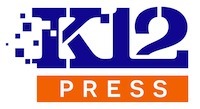Search engine optimization (SEO) is not just a buzzword; it’s a critical factor that can significantly influence your school’s enrollment numbers. With more parents and students turning to the internet to research educational options, having a strong online presence is essential. The impact of SEO on school enrollment starts with the ability to find your school online. SEO ensures that your school’s website appears prominently in search engine results, making it easier for prospective families to find and choose your institution.
This post explores how specific SEO strategies directly impact school enrollment numbers, supported by case studies and practical tips to help you maximize the benefits of SEO.
The Connection of SEO on School Enrollment
Before diving into specific strategies, it’s important to understand why SEO matters for school enrollment. When parents and students search online for schools, they typically use search engines like Google. If your school’s website doesn’t appear on the first page of search results, you’re missing out on a significant number of potential inquiries and, ultimately, enrollments.
SEO helps improve your website’s visibility in search results by optimizing it for relevant keywords, improving the user experience, and building credibility through high-quality content. The better your SEO, the more likely your school is to attract and convert potential students.
Key SEO Strategies That Impact Enrollment
- Keyword Research and Optimization
- Target Relevant Keywords: Conduct thorough keyword research to identify the terms that prospective parents and students are searching for. Focus on keywords related to your school’s strengths, location, and unique offerings.
- Optimize On-Page Content: Integrate these keywords naturally into your website’s content, including page titles, headings, meta descriptions, and body text. This helps search engines understand the relevance of your content to specific searches.
- Local SEO
- Optimize for Local Searches: Many families search for schools within a specific geographic area. Ensure your school’s website is optimized for local SEO by including location-based keywords, creating a Google My Business profile, and encouraging positive reviews from parents.
- Local Citations and Listings: Ensure your school is listed in local online directories and educational websites. Consistent Name, Address, and Phone number (NAP) information across these listings helps boost your local SEO.
- High-Quality Content Creation
- Blogging and Resource Pages: Regularly update your website with valuable content that addresses the needs and concerns of prospective parents and students. This could include blog posts, FAQs, and resource pages about your school’s programs, achievements, and admissions process.
- Content for Different Stages of the Decision-Making Process: Create content that speaks to families at different stages of their journey—from initial research to final decision-making. This helps nurture potential enrollments through each step.
- Mobile Optimization
- Ensure Mobile-Friendliness: With more searches happening on mobile devices, it’s crucial that your school’s website is mobile-friendly. A responsive design that adjusts to different screen sizes improves user experience and SEO rankings.
- Fast Loading Times: Optimize your website’s loading speed, as slow sites can deter visitors and negatively impact your search engine rankings.
- User Experience (UX) and Site Structure
- Intuitive Navigation: Make it easy for visitors to find the information they’re looking for. Clear menus, well-organized content, and a logical site structure enhance user experience and boost SEO.
- Engaging Visuals and Media: Use high-quality images, videos, and infographics to make your content more engaging. Search engines favor sites that offer a rich user experience.
- Link Building and Backlinks
- Earn High-Quality Backlinks: Building a strong backlink profile is key to improving your website’s authority in the eyes of search engines. Reach out to local media, educational blogs, and community organizations to secure backlinks from reputable sources.
- Internal Linking: Use internal links to guide visitors to other relevant pages on your website. This not only improves the user experience but also helps search engines crawl your site more effectively.
Case Studies: Success Stories of SEO on School Enrollment
- Case Study: The Power of Local SEO
- Background: A small private school in a suburban area was struggling to attract new enrollments despite offering strong academic programs.
- Strategy: The school focused on local SEO by optimizing their Google My Business profile, collecting positive reviews, and incorporating location-based keywords into their website content.
- Results: Within six months, the school saw a 40% increase in website traffic from local searches, leading to a 25% increase in inquiries and a 15% boost in enrollment.
- Case Study: Content Marketing and User Experience
- Background: A charter school wanted to differentiate itself from nearby competitors and attract more prospective students.
- Strategy: The school developed a content marketing plan that included weekly blog posts, video testimonials from students and parents, and an easy-to-navigate admissions page. They also optimized the site for mobile use.
- Results: The school’s website traffic doubled, and the conversion rate for inquiries improved by 30%, resulting in a significant increase in enrollment.
Maximizing SEO for Your School’s Success
To fully capitalize on the power of SEO on school enrollment, it’s important to adopt a comprehensive approach that includes both on-page and off-page strategies. Regularly monitor your website’s performance using tools like Google Analytics and adjust your SEO tactics based on what’s working and what’s not.
- Continuous Improvement: SEO is not a one-time effort. It requires ongoing attention and adaptation as search engine algorithms and user behaviors evolve.
- Collaboration: Work with your school’s marketing team, IT staff, and any external SEO professionals to ensure a cohesive strategy that aligns with your enrollment goals.
The True Impact of SEO on School Enrollment
You can have a profound impact with SEO on school enrollment numbers by making your institution more visible and appealing to prospective families. By implementing the strategies outlined in this post, you can improve your school’s online presence, attract more inquiries, and ultimately boost your enrollment.
At K12Press, we specialize in helping schools maximize their digital potential through effective SEO and web strategies. If you’re ready to see how SEO can transform your school’s enrollment numbers, reach out to us today. Contact K12Press














